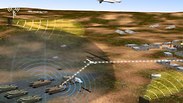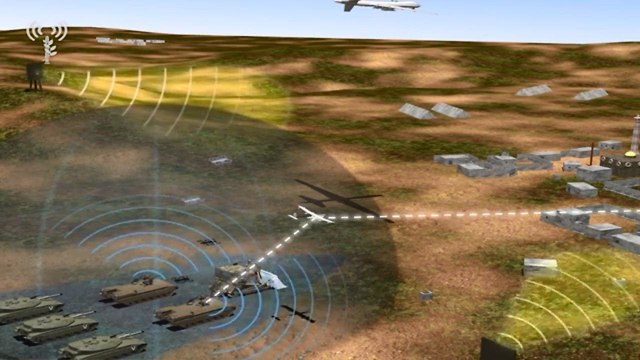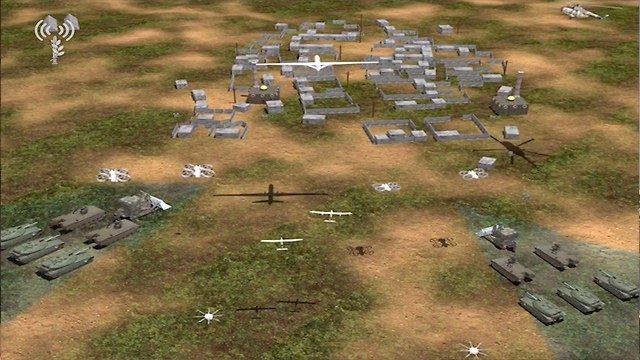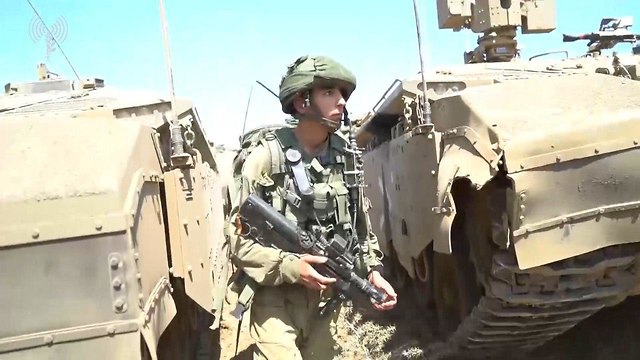
IDF's war plans for facing Hezbollah
The IDF understands that Hezbollah has gained masses of experience in the civil war. Now it is undergoing changes to prepare it for the next showdown with 'the strongest army in the Middle East after the IDF.'
For the very first time, the IDF's ground forces are implementing a four-dimensional 'combined battle' strategy in preparation for a possible war with Hezbollah.
Over the past few days, the IDF has been carrying out the most extensive training exercises conducted by the 36th Armored Division, including the 7th Armored Brigade.
The "Gideon" battlgroup—a combat brigade that includes thousands of IDF soldiers—is training in the Golan Heights for a possible conformation with the modern Hezbollah terror group. Militarily, the Labenon-based group is an army in every sense. It is advanced, fast, mobile and combative.
Hassan Nasrallah's organization, bruised and bleeding from the Syrian civil war in which thousands of Hezbollah fighters were killed and wounded, is slowly returning to Lebanon. Hezbollah also faces internal problems as well as a reduction in the annual Iranian support budget.
Nevertheless, the organization has a high operational self-confidence and has gained rich experience from four years of fighting.
Hezbollah now has new military capabilities, such as the ability to maneuver forces into enemy territory, drafting large forces in rapid speed, and more.
The organization, recently described by a senior officer in the Northern Command as "the strongest army in the Middle East after the IDF," has received a new arsenal of weapons: special and high-quality night vision devices, electronic combat weapons, and hundreds of drones and UAVs, along with mortars carrying half a ton of explosives, and heavy rockets.
Meanwhile, IDF ground forces are undergoing a major facelift that will be implemented in the coming years by additional standing army brigades, under the guidance of the four-dimensional 'combined battle' strategy.
The IDF will practice fighting in the underground, cyber warfare, and prepare for shooting from rooftops or from high-rise building windows.
.
In addition, the Gideon battlegroup will implement an invisible network on the battlefield that includes 24 intelligence planes that can detect anything that emits a signal. Once a signal is detected and decoded, an exact location is found, and the "smart trigger" system turns it into a target in a matter of seconds or minutes.
During training in the Golan Heights, the Golani Brigade's 13th Battalion fighters fired the first precision-guided mortar shell that has flight control capabilities and a five meter magin of error accuracy.
Next year a similar conversion of artillery shells is expected. "Our goal is to convert 50 percent of the land-based ammunition stockpiles into precise weaponry," said a senior official from the ground forces.
Following incidents such as the Kfar Giladi disaster in the Second Lebanon War, and the fighting in Shuja'iyya in Operation Protective Edge, each ground maneuver unit will be provided with an air defense battery to combat heavy mortar and suicide bombers threats, similar to the old antiaircraft batteries that protected IDF ground maneuver forces in the 60s, 70s and 80s.
The battleground will include dozens of aircraft—the air force's rescue and evacuation helicopters, logistic drones, observation drones, and more.
"Each air maneuver unit in the air force will have a small airport with an air control team that will manage everything that happens up to 1,000 feet," a source in ground forces explained.
The ground forces, together with the air force, will cover the aerial territory above 1,000 feet, while the area above 3,000 feet would be covered by the air force alone.
In one of the drills performed by the IDF, a helicopter landed without the inference of drones and UAVs. In fact, recent events in Gaza helped with this type of training.
According to a senior officer in the ground forces, "this is not a fantasy, we are looking ahead… each division will have its own communications and logistical capabilities."
A revolution on the ground will also change the engineering capabilities of the brigades: an engineering battalion will include a special unit for handling enemy tunnels.
The elite Yahalom unit will join each battalion and will cover difficult targets and situations such as penetrating bunkers. In addition, within a year, the IDF will be able to receive real-time intelligence from intelligence corps.
"We are training the forces against the most updated and relevant enemy," said a senior officer in the ground forces.
"We set up a special battalion that includes about 400 fighters, and deployed them throughout the Golan Heights in order to simulate the capabilities Hezbollah has today," the officer added.














